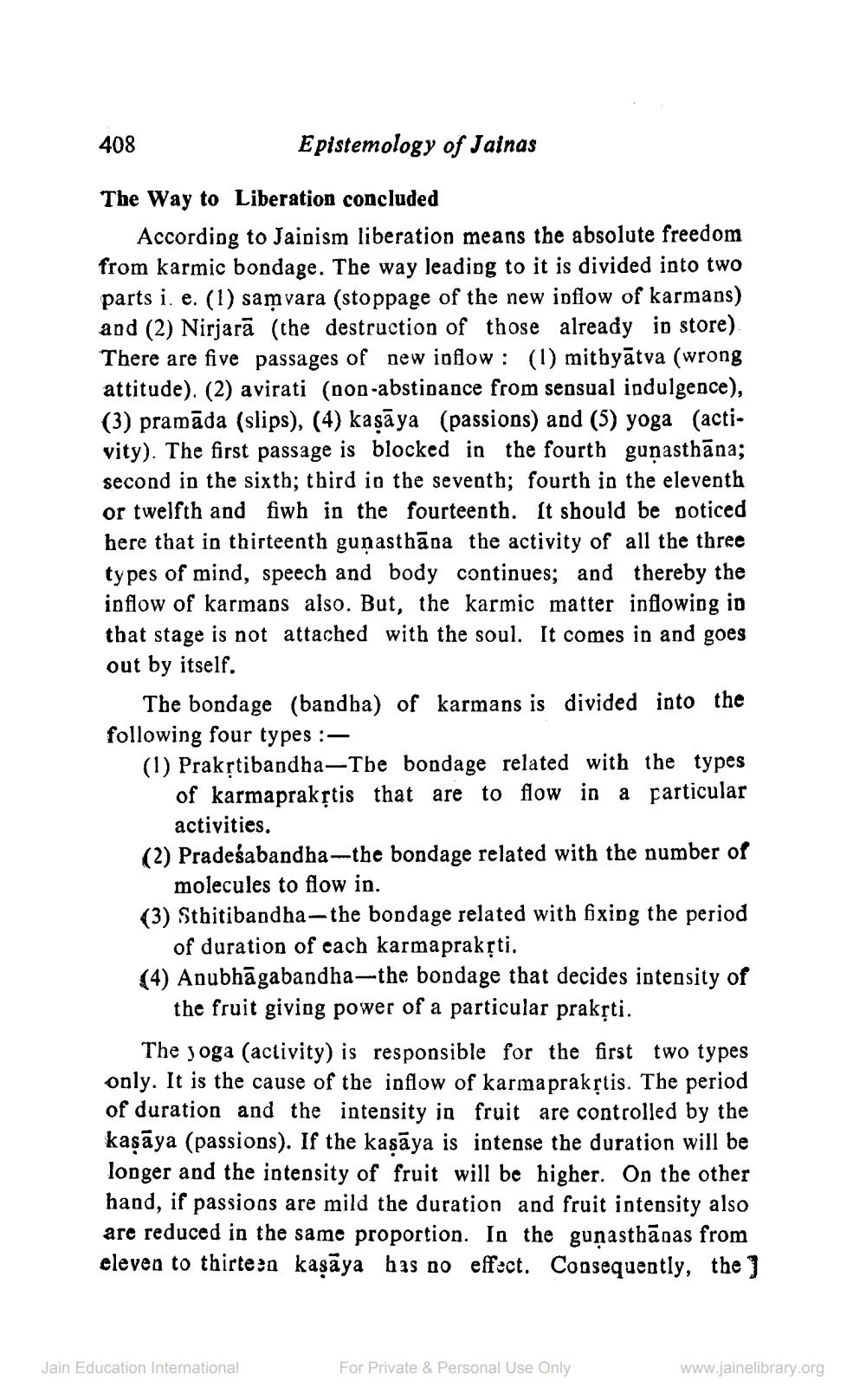________________
408
Epistemology of Jainas
The Way to Liberation concluded
According to Jainism liberation means the absolute freedom from karmic bondage. The way leading to it is divided into two parts i. e. (1) samvara (stoppage of the new ipflow of karmans) and (2) Nirjarā (the destruction of those already ip store) There are five passages of new inflow : (1) mithyātva (wrong attitude), (2) avirati (non-abstipance from sensual indulgence), (3) pramāda (slips), (4) kaşāya (passions) and (5) yoga (activity). The first passage is blocked in the fourth gunasthāna; second in the sixth; third in the seventh; fourth in the eleventh or twelfth and fiwh in the fourteenth. It should be noticed here that in thirteenth gunasthāna the activity of all the three types of mind, speech and body continues; and thereby the ipflow of karmaps also. But, the karmic matter inflowing in that stage is not attached with the soul. It comes in and goes out by itself.
The bondage (bandha) of karmans is divided into the following four types :(1) Prakrtibandha—The bondage related with the types
of karmaprakştis that are to flow in a particular
activities. (2) Pradeśabandha--the bondage related with the number of
molecules to flow in. (3) Sthitibandha-the bondage related with fixing the period
of duration of each karmapraksti. (4) Anubhāgabandha-the bondage that decides intensity of
the fruit giving power of a particular praksti. The yoga (activity) is responsible for the first two types only. It is the cause of the inflow of karmaprakstis. The period of duration and the intensity in fruit are controlled by the kasāya (passions). If the kaşāya is intense the duration will be longer and the intensity of fruit will be higher. On the other hand, if passions are mild the duration and fruit intensity also are reduced in the same proportion. In the gunasthānas from eleven to thirte:n kaşāya has no effect. Consequently, the )
Jain Education International
For Private & Personal Use Only
www.jainelibrary.org




